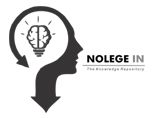Comparative Study of the Crime of Trafficking in Property and Human Beings in the Criminal Code
Abstract
Trafficking in property and human beings is a serious challenge with significant economic, social, and security implications, especially in conflict zones like Afghanistan. This study compares how Afghanistan's Criminal Code addresses these crimes, clarifying their legal definitions, foundations, conditions, and penalties. Although human and property trafficking are distinct, they often overlap in methods and criminal networks, making their comparative analysis crucial. Human trafficking involves exploitation like forced labor, sexual abuse, and organ trade, which severely impacts human rights and national stability. Property trafficking, including illegal movement of goods, assets, or money, destabilizes the economy and fuels organized crime. The research compares Afghan laws with international standards, including key UN protocols, to evaluate alignment and identify legal reform needs. Using an analytical-descriptive approach, the study also draws on case examples to assess the legal system's current practical challenges. Findings show that while Afghanistan’s Criminal Code provides a legal framework, it lacks clear definitions and boundaries for these crimes, causing enforcement challenges. The study offers recommendations for reform, such as improving oversight systems, training officials, raising public awareness, and enhancing international cooperation. Ultimately, the research aims to raise awareness, support legal reforms, and strengthen global collaboration to combat trafficking, with positive regional and worldwide impacts.
References
Babaei S, Ghazavi R, Erfanian M. Urban flood simulation and prioritization of critical urban sub-catchments using SWMM model and PROMETHEE II approach. Physics and Chemistry of the Earth, Parts A/B/C. 2018 Jun 1;105:3-11.
Haidari H, Kopecki Z, Bright R, Cowin AJ, Garg S, Goswami N, Vasilev K. Ultrasmall AgNP-impregnated biocompatible hydrogel with highly effective biofilm elimination properties. ACS applied materials & interfaces. 2020 Aug 25;12(37):41011-25.
Rahimi K, Bidel Z, Nazarzadeh M, Copland E, Canoy D, Ramakrishnan R, Pinho-Gomes AC, Woodward M, Adler A, Agodoa L, Algra A. Pharmacological blood pressure lowering for primary and secondary prevention of cardiovascular disease across different levels of blood pressure: an individual participant-level data meta-analysis. The Lancet. 2021 May 1;397(10285):1625-36.
Azari H, Tabatabai Hesari N. The Iranian Legal System Challenges regarding Accession to the Human Rights Treaties from the Perspective of International Law. Comparative Law Review. 2017 Mar 21;8(1):1-24.
Mobasher M, Salari P, Larijani B. Key ethical issues in pediatric research: Islamic perspective, Iranian experience. Iranian Journal of Pediatrics. 2012 Dec;22(4):435.
Potter LG. Sufis and sultans in post-Mongol Iran. Iranian Studies. 1994 Jan;27(1-4):77-102
Mohammadi, R. Y. (2016). Modern human trafficking (3rd ed.). Samt Publications.
Mehdizadeh A, Barzegar M, Negargar S, Yahyavi A, Raeisi S. The current and emerging therapeutic approaches in drug-resistant epilepsy management. Acta Neurologica Belgica. 2019 Jun 1;119(2):155-62.
Rasouli M. Basic concepts and practical equations on osmolality: biochemical approach. Clinical biochemistry. 2016 Aug 1;49(12):936-41.
Karenga PV. Comparative Analysis Between Slavery and Trafficking in Persons. InA West African Model to Address Human Trafficking 2022 Feb 2 (pp. 187-198). Cham: Springer International Publishing.





